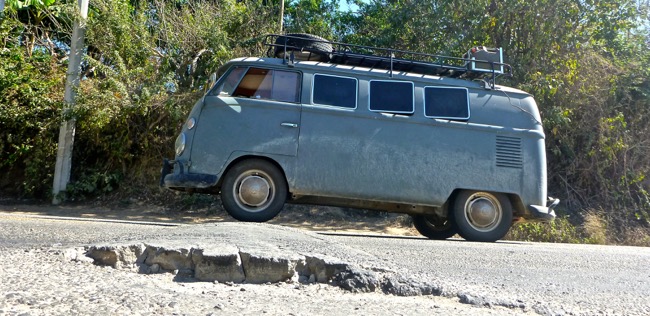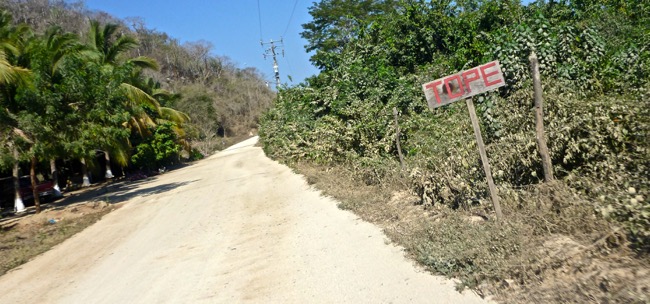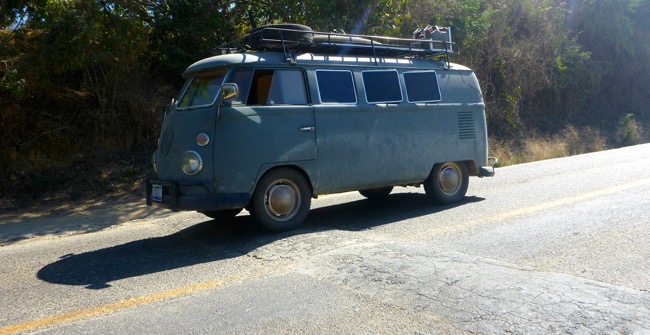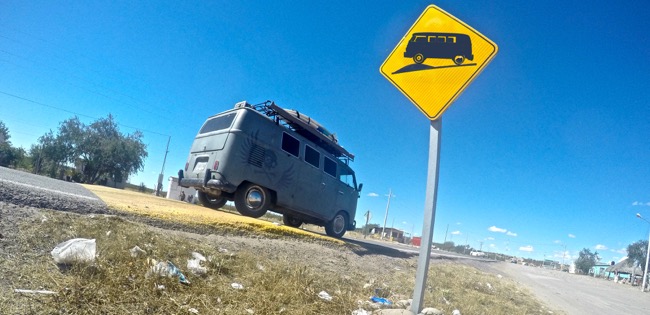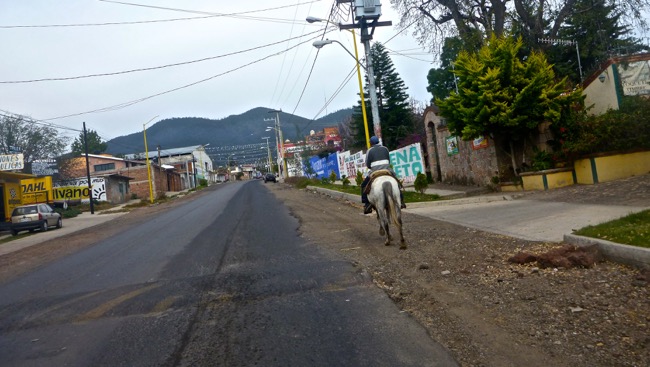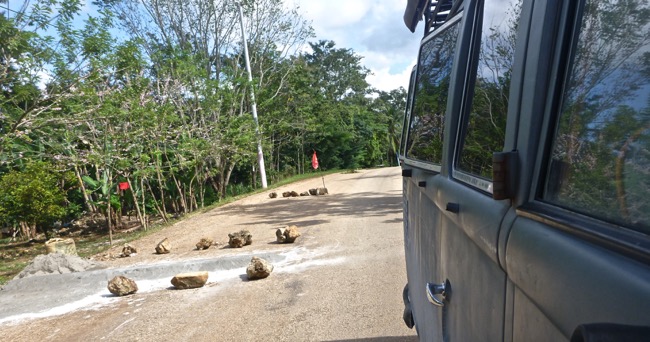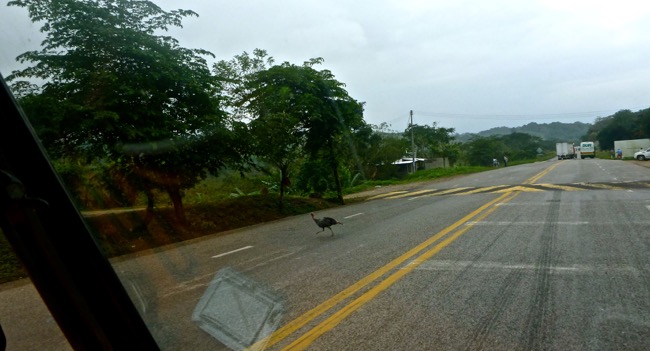a precursor on driving in mexico
just in case you decide to drive a car in mexico. We currently have a friend in route to visit us in baja, and it dawned on me that when trying to describe safety on mexican roads, there was a bit too much to cover in a text.
We certainly weren't handed instructions when crossing the border, but you slowly pick up on the local driving system and (once you understand it) it actually makes more sense than anything further north. It's the little things that make the difference here.
On a highway you move over to the right hand lane in order wait for a chance to turn left…no holding up traffic simply because you want to turn left with several cars behind you. Clearly something our old b.c. neighborhood should study, where one person turning left means traffic halts for 5-10 minutes.
You never, ever, ever drive at night (unless you need to). As if it weren't enough that many mexicans (and gringos on vacation) think nothing of driving home after copious amounts of alcohol. Add to that the general disrepair of most mexican vehicles, the high likelihood many don't even have functioning headlights, the grand disrepair of 98% of the roads you'll be driving, or maybe the fact that cattle and other large animals like to stand on the asphalt to stay warm at night. Trust me. All in... it's just not a great idea.
Pull over, pour a tequila or cerveza and begin again in the morning. Please.
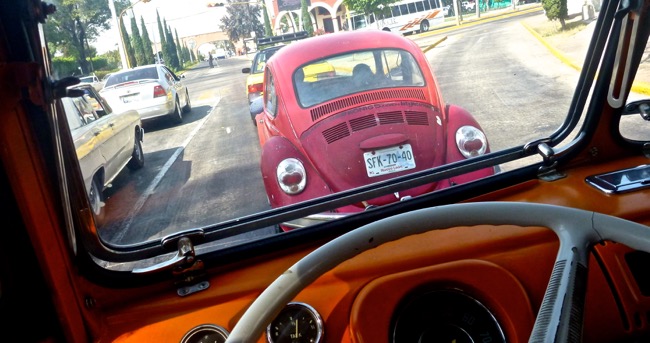

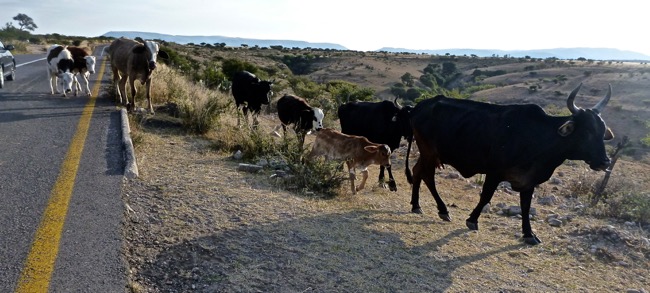 Passing appears to be one of the primary sticky points for most foreigners, despite the fact that it works in perfect harmony for locals. Only on cuotas or in the middle of the largest cities do roads have more than two lanes. These roads are the equivalent of "driving mexico for dummies" and make the entire process easy to learn. Sadly, those roads are also all in the middle of the country, meaning you can't get there without learning on the more "interesting" roads along the way.
Passing appears to be one of the primary sticky points for most foreigners, despite the fact that it works in perfect harmony for locals. Only on cuotas or in the middle of the largest cities do roads have more than two lanes. These roads are the equivalent of "driving mexico for dummies" and make the entire process easy to learn. Sadly, those roads are also all in the middle of the country, meaning you can't get there without learning on the more "interesting" roads along the way.
Because of poor road conditions and terrain that covers most of the country- passing becomes essential (either to dodge that 4' pothole or to pass the vehicle, tractor, horse or 5 person family huddled on the single scooter in front of you). The problem is that you typically can't see far enough ahead to know when it's a safe time to do so.
Never fear... in mexico, it's actually not (solely) your responsibility to decide when it's safe to pass. It's actually the responsibility of the car in front of you (the one with best visibility) to let you know when it's clear and safe. The car leading the pack simply turns on their left turn signal to alert the cars behind that it is safe to go around. At this point, as the car in the back you are expected to fully trust the helpful driver in front, pull out and go around the slower vehicle.
In the case of most local drivers and on most roads, the left hand turn signal is combined with pulling as far to the right side of the road (and onto the shoulder) as possible. How thoughtful, especially when the vehicle in front of you is a semi. This tried and true system works flawlessly and makes all drivers more aware of what's going on both in front of and behind them. No sunday drivers holding up the left hand lane, no need for 8 lane highways and no playing chicken as you peak around a truck trying to find the best time to pass.
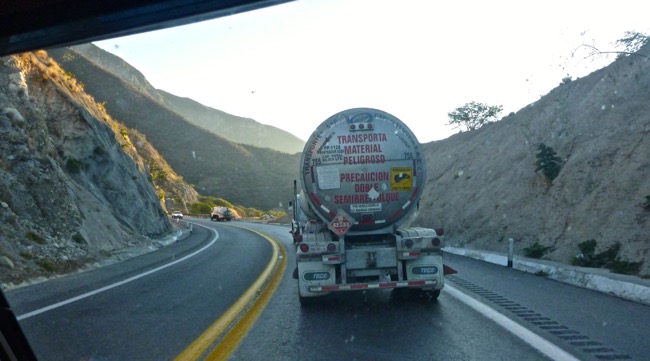
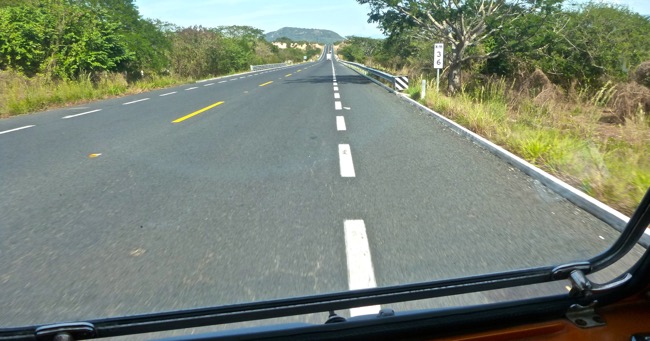 This is of course is all true in a perfect world, which in almost all cases... driving in mexico is not. In the real world scenario, several cars will have already lined up behind the dilapidated pickup truck with two cows and 3 amigos in the back; and all mayhem breaks out following the left hand turn signal. Cars at all points in the crowded line up immediately pull into the left lane together and jostle for position until the last possible second to swerve back in front of whatever car they can before oncoming traffic hits them head-on. Picture a lineup of 9 cars in which no less than 6 cars in the back try racing around all other cars and then pull back in front - except for 1 or 2, who are convinced they can still pass the next slowest car before the approaching semi makes it the last 25 meters.
This is of course is all true in a perfect world, which in almost all cases... driving in mexico is not. In the real world scenario, several cars will have already lined up behind the dilapidated pickup truck with two cows and 3 amigos in the back; and all mayhem breaks out following the left hand turn signal. Cars at all points in the crowded line up immediately pull into the left lane together and jostle for position until the last possible second to swerve back in front of whatever car they can before oncoming traffic hits them head-on. Picture a lineup of 9 cars in which no less than 6 cars in the back try racing around all other cars and then pull back in front - except for 1 or 2, who are convinced they can still pass the next slowest car before the approaching semi makes it the last 25 meters.
On most mexican roads the clear area for passing follows hills or curves (or both), which means that at the same time 6 cars are hustling to pass from your direction, they are often met by a few cars making the same move from the oncoming traffic. You occasionally could have as many as 4 cars wide on a simple 2 lane road, all hoping that the shoulder continues long enough for the exchange to successfully complete. It's rather like nascar with two way traffic. Awesome!
It's probably also fair to state that the driver in front (who began this entire collaborative sequence) might not have perfectly calculated your time needed to pass ...nor the distance/speed of oncoming traffic before engaging "the signal". This means that your fully trust-based maneuver might not go as well as expected, especially if the driver in front happens to be drinking a few cervezas along the way (as stated, fairly common).
More reason to pass him, but maybe a bit less confidence in the judgement involved in his left turn safety gesture. Hey, right up until you throw a gringo in the mix, the system works. Mostly.
Except when it doesn't...then it goes horribly, horribly awry.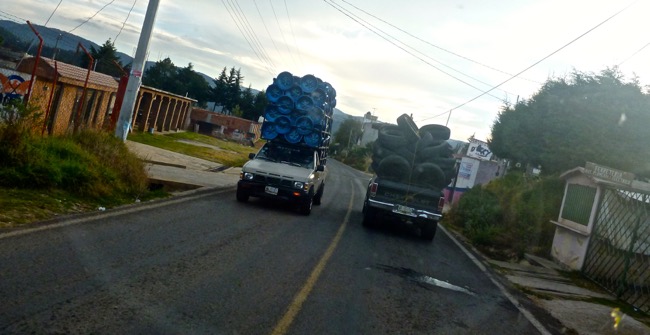
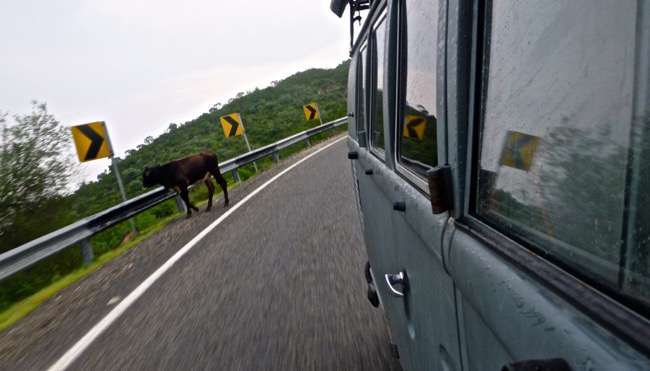
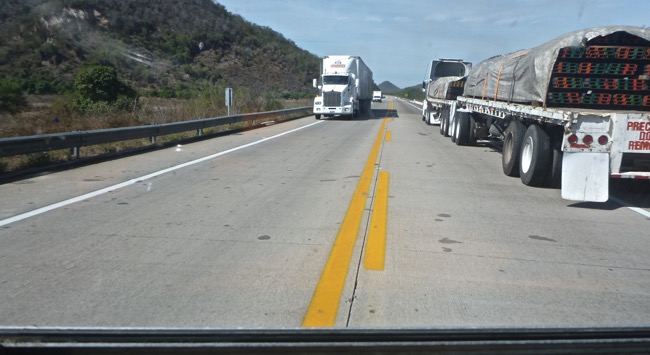
The part of driving in mexico that does not work in our humble opinion, is the tope (pronounced toe-pay). A tope is (roughly translated as) a mexican speed bump, but in most cases is neither a "bump" nor a method of controlling your speed, so much as a way of bringing you to a complete stop. These typically concrete or asphalt obstacles are often shaped more like sidewalk curbs than bumps. You could also happen into their relatives the anti-tope (a ditch cut into the asphalt), the rop-e (pronounced row-pay), a 4-6" thick rope laid across the road, or anything ranging from rocks tossed into the highway to a chain or rope that may or may not be raised as you approach.
